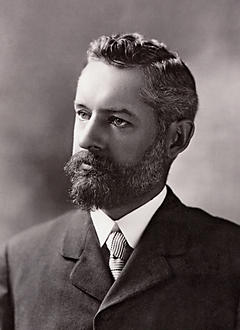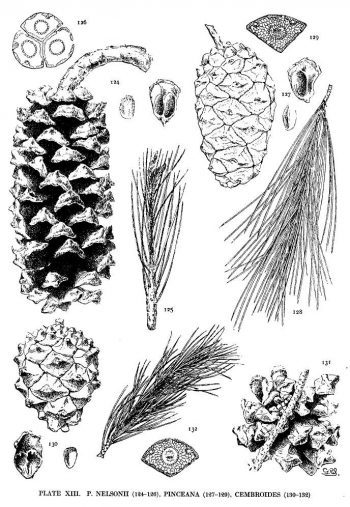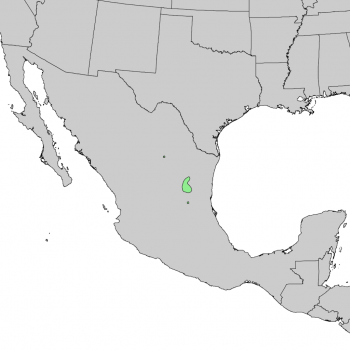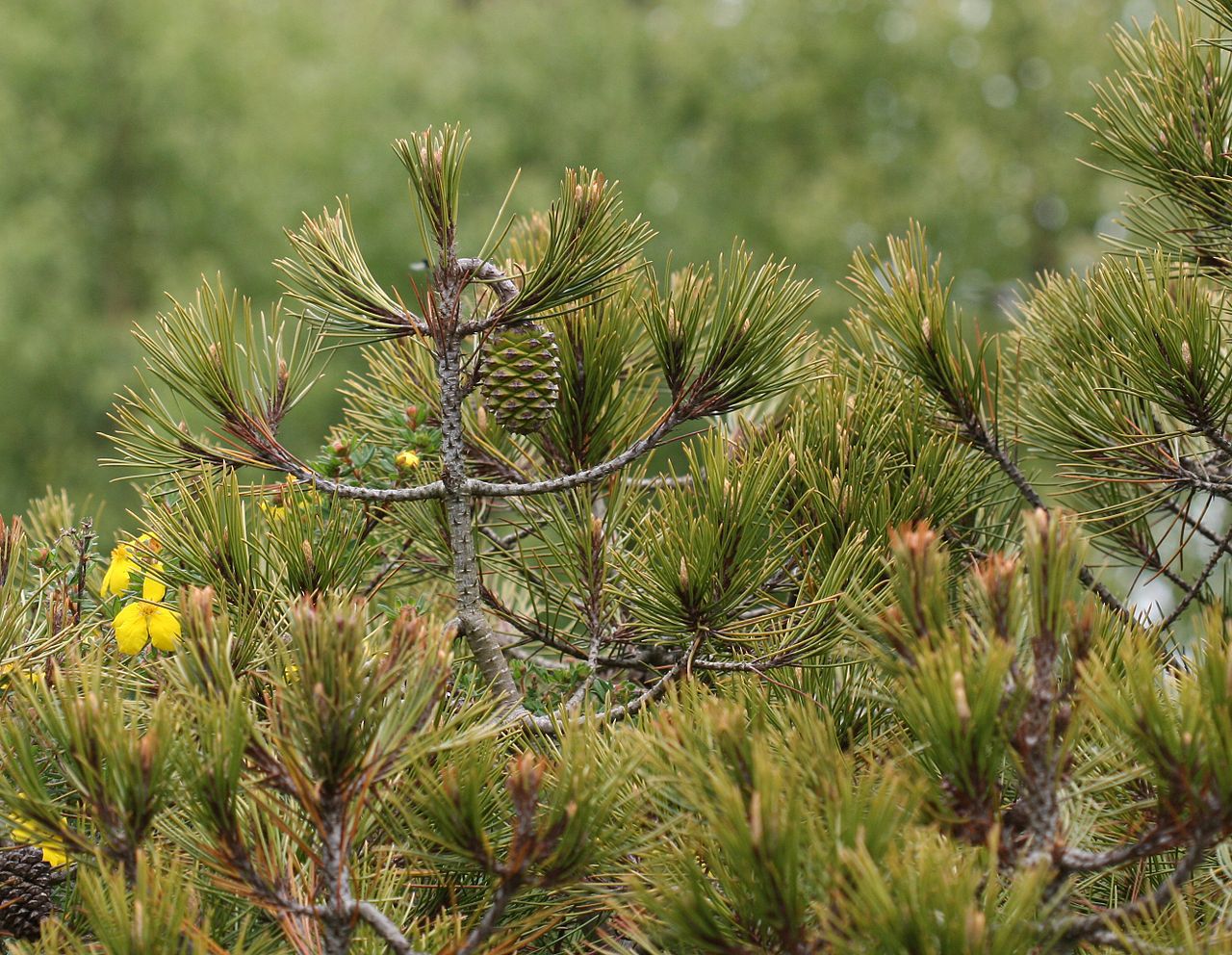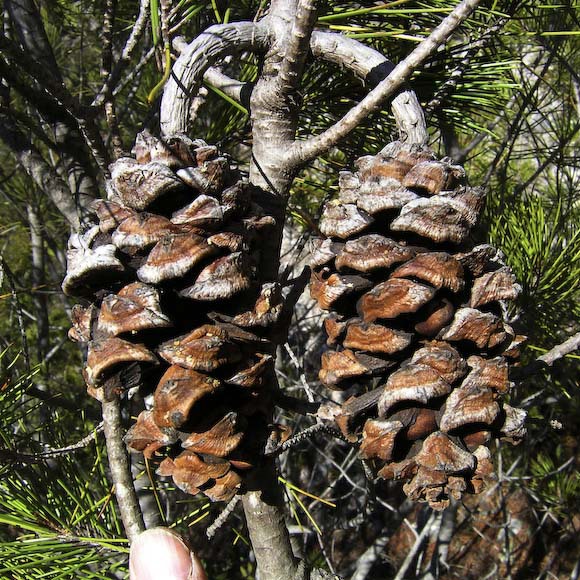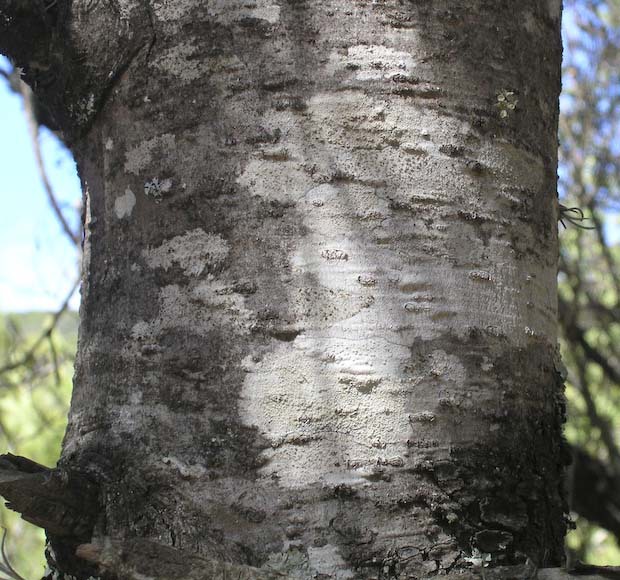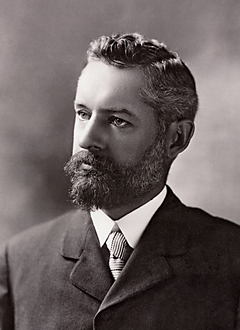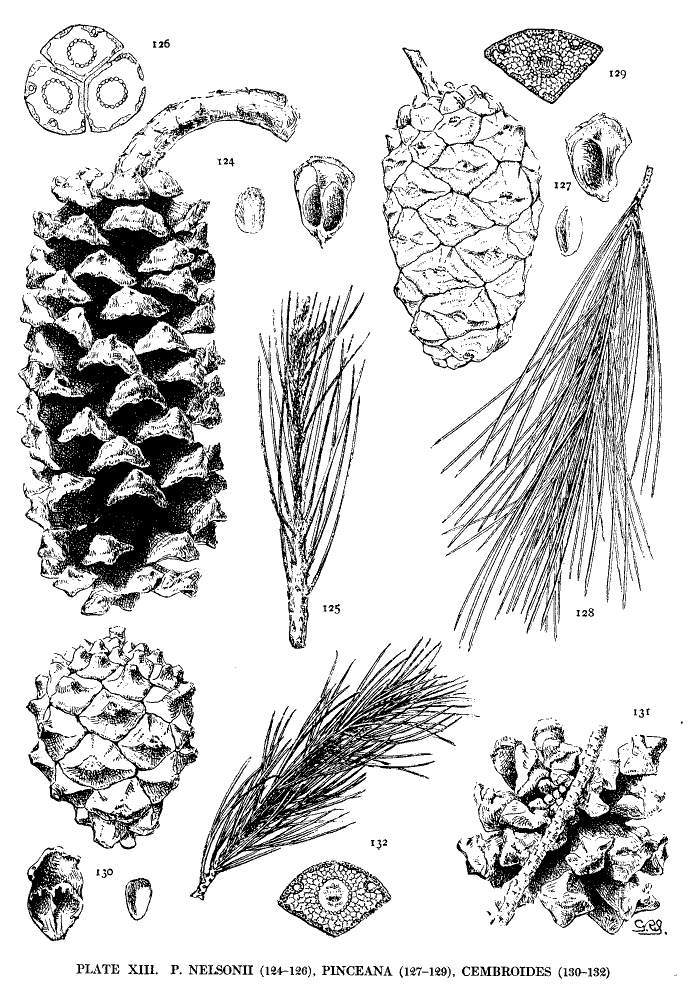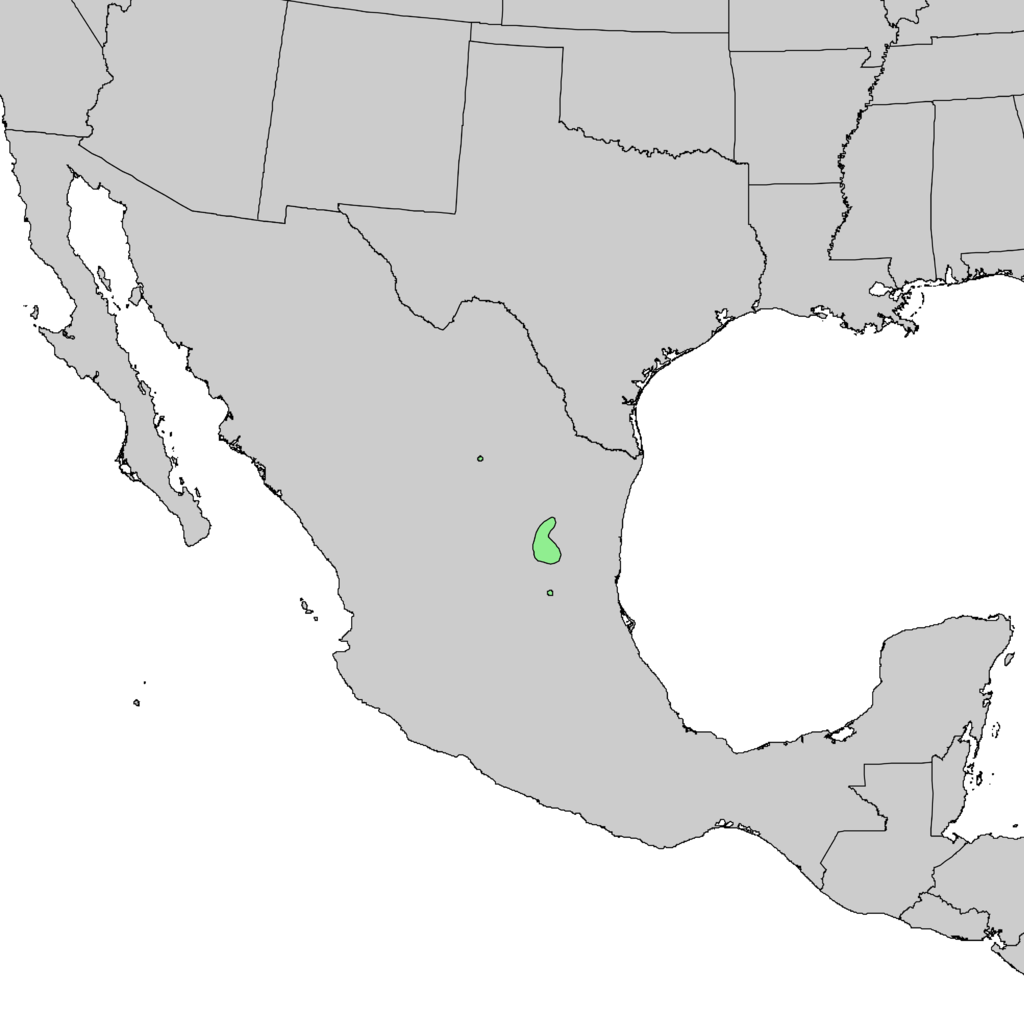subgenus Strobus (Lemmon), section Parrya (Mayr), subsection Nelsoniae (Van Der Burgh) - a unique Mexican pine.
Pinus nelsonii, first described in 1904 by G.R. Shaw in Gardener's Chronicle, series 3, vol. 36. This conifer is commonly known as Nelson's piñon pine; as well as Piñon de Nelson in the Spanish language. The species name honors Edward W. Nelson (1855 - 1934), who procured the type specimen, among many other Mexican plants that he collected for the U.S. Department of Agriculture.
Ethnobotany. Robert Lanner wrote in his book, The piñon pine, the seeds are edible, and quite tasty; local Indians prefer them to seeds of P. cembroides.
Description. Nelson's piñon is a small, evergreen, coniferous species of tree that grows to mature heights of 34 feet (10 m), though rarely more than 20 to 25 feet (6 - 7 m) with a trunk up to 8 inches (20 cm) in diameter, measured at breast height; and a rounded, dense crown.
- Branches grow upcurved and erect for their top 6 to 10 feet (2 - 3 m).
- Bark is smooth and dull grey in color on stems up to about 6 inches (15 cm) in diameter. With age bark become dark and longitudinally fissured on larger stems.
- Leaves (needles) are a conspicuous yellow-green in color, borne in fascicles of 3 (sometimes 4), but the individual leaves in each fascicle remaining tightly 'zipped' together by their serrulate margins, thus appearing single; they can be separated by rubbing the fascicle in the hand. Fascicles measure 1.6 to 6 inches (4 - 7.5 cm) long, about 0.04 inch (1 mm) thick; with a fully persistent sheath (unlike all other pines in subgenus Strobus). Seedlings have only juvenile foliage for several years.
- Seed cones are cylindrical, measuring 2.4 to 4.8 inches (6 - 12 cm) long by 1.6 to 2 inches (4 - 5 cm) broad, colored green when young, ripening to a rich bright red-brown, carried reflexed down the stem on stout downcurved peduncles, 1.2 to 2.8 inches (3 - 7 cm) long and 0.28 to 0.4 inch (7 - 10 mm) thick. The species is unique in Pinus in not showing a resting stage at 6-12 months (hence the ill-defined umbo); the six-month old conelets are already nearly half the mature size. The cones are also unique in Pinus in sometimes having leaf fascicles on the peduncle; these fascicles are normal but fall before the cone is mature. Cones mature in November about 18 to 19 months after pollination.
- Seed scales are finely wrinkled, short, and stout, measuring 0.8 to 1 inch (20 - 25 mm) broad, with a transverse ridge and a large but ill-defined 0.4 to 0.6 inch (10 - 15 mm) umbo.
- Seeds are large, 0.4 to 0.48 inch (10 - 12 mm) long, blackish in color with a red spot near the apex, seed wings measure 0.04 to 0.08 inch (1 - 2 mm); they are vestigial, usually remaining attached to the scale when seed removed. Seeds do not fall naturally from cone, rather, are dispersed by birds, mainly gray-breasted jay Aphelocoma ultramarina. After seed dispersal the cones usually fall, leaving the peduncle on the branch.
When trying to identify this tree out in the field, two characters really set it apart from the
P. cembroides that grow with it. One is the foliage, which is a yellow-green that is highly distinct from the deep, rich green of the
P. cembroides. The other prominent difference, which is visible on branches and stems up to at least 15 cm diameter, is that the stems of
P. nelsonii are quite smooth, whereas
P. cembroides has rough stems from the start, due to the decurrent pulvini, and become rougher over time.
natural range of Pinus nelsonii
Distribution. This species is native to northeastern Mexico, local in Nuevo León, San Luis Potosà and Tamaulipas, at elevations of 6,000 to 8,000 feet (1,800 - 2500 m) above sea level. It usually grows mixed with P. cembroides and mixed xerophytic shrub vegetation including cacti and agaves in fairly flat, very dry areas, growing mostly on limestone.
Hardy to USDA Zone 8 - cold hardiness limit between 10° and 20°F (-12.1° and -6.7°C).
Jesse P. Perry; The pines of Mexico and Central America; ©1991, Timber Press, Portland, OR.
